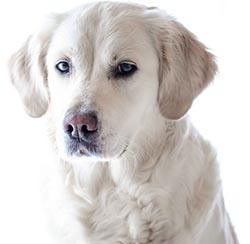Review Guide - Genetics and Inheritance
Chapters are from Openstax Biology
Chapter 11: Meiosis & Sexual Reproduction
1. Describe the events that occur during meiosis
2. Compare final product of meiosis to that of mitosis
3. Describe how the processes of meiosis ensure that each gamete is unique
4. Compare autosomes to sex chromosomes (identify on a karyotype)
5. Review the case notes on the SRY allele and how sex is determined in humans
Chapter 12: Mendel's Experiments and Heredity
6. Mendel’s experiments (F1, F2, P generations); perform monohybrid and dihybrid crosses (9:3:3:1)
Explain the laws of inheritance (segregation, independent assortment, dominance
7. Describe cases where genes located on the X chromosome control traits, be able to perform crosses involving X linked genes. (hemophilia, eye color in drosophila)
8. Explain how codominant and incomplete dominance works, solve crosses that involve these types of traits.
9. Explain epistasis and perform genetic crosses that involve epistatic alleles (labradors)
10. Describe how multiple genes can control single traits (blood groups); polygenic inheritance (skin color)
11. Perform a chi square analysis on data sets.
Chapter 13: Chromosomal Theory and Genetic Linkage
12. Explain how chromosome maps are made using recombination frequency.
13. Solve problems using data from experiments with linkage groups. (Morgan's fly experiments)
14. Create a chromosome map from cross-over frequency data.
SAMPLE PROBLEMS:
1. Monohybrid Cross: A pea plant that is heterozygous for the trait Tall/short allele is self-pollinated. What are the phenotypic ratios among the offspring?
2. Dihybrid Cross: In plants, round seeds is dominant to wrinkled seeds and tall is dominant to short. Show the cross between two plants that are heterozygous for both traits. What are the phenotypes of the offspring and in what proportion?
b. What if the second parent was recessive for both traits? What phenotypes would you expect in the offspring?

3. Epistatic Cross: In Labradors, the yellow coat color is epistatic. Labs can be black (dominant), brown (recessive) or yellow which is caused by a pair of recessive alleles (ee) A heterozygous black lab (BbEe) is crossed with a yellow lab (Bbee). What proportion of the offspring will be:
Black? _________ Yellow? __________ Brown? __________
4. Codominance: In cattle, coat color can be red or white. If a red cow is crossed with a white cow, the offspring is a mottled red & white – coloration farmers call “roan”. What phenotypes would you get from a cross between a roan and a white cow?
5. Blood types: If one parent has type A blood and another parent has type B blood, what are ALL the possible blood types of the children. You do not know the parents’ genotypes.
6. Sex Linked: In humans, colorblindness is a sex linked, recessive trait. If a woman who is a carrier for colorblindness marries a colorblind man, what are the chances that their children will be colorblind?
7. A hairy-stemmed (HH) purple flowered (PP) plant is crossed with one that is smooth-stemmed (hh) and white flowered (pp). Show the genotypes and phenotypes of the F1 generation.
The offspring is crossed with a double recessive test cross. The following results were obtained.
| Hairy, Purple | Hairy, white | Smooth, Purple | Smooth, white |
| 45 | 5 | 5 | 45 |
Explain these results, include an explanation for recombination.
Determine the distance between the stem and flower alleles.
8. The follow crossover frequencies were determined from various experiments: The crossover frequency between gene A and C is 30%. The crossover frequency between B and C is 44%. How far apart are A and B? Sketch the chromosome map.

